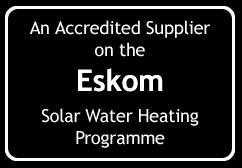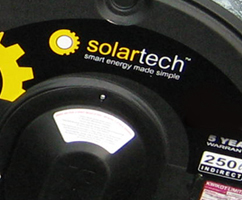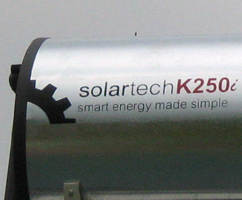

February 10th 2011
For years now, the US military has been looking for more ways to help combat environmental pollution. Recycling programs are already in effect aboard some military installations, service members and their families are briefed about conserving energy and now, Atlantic Marine Corps Communities has partnered with First Light Solar Energy to help reduce energy costs. After the agreement was signed by both companies, phase one of the project began during the summer of 2010. At that time, 900 homes throughout Marine Corps Base Camp Lejeune and tenant commands were slated to receive solar hot-water panels. ?Half of the solar hot-water heaters are being installed in new homes, the other half are being retrofitted on AMCC?s existing homes,? said Brownie Newman, the vice president of FLS Energy. ?Homes that currently have this include Tarawa Terrace II, Watkins Village and Nugent Cove homes in Marine Corps Air Station Cherry Point.? Workers are installing the solar hot-water heaters at a rate of 65 systems per month with a goal of eventually getting up to 80 systems per month. Additionally, AMCC decided to commit to phase two of the program, which will bring an additional 1,300 solar water heaters to Camp Lejeune. ?This program is currently the largest in the continental United States,? said Matt Lynn, the deputy project director with AMCC. ?We?re proving that it can be done on a large scale and are hoping that other installations follow us in achieving renewable energy goals.? Newman has already stated that what has started in Lejeune has sparked like a wildfire and ignited similar ideas on other military installations. ?We anticipate that this will become a national model and is likely to be replicated at many other military communities in the years to come,? said Newman. ?Not only is it an energy saver, but helps the environment as well. The project will prevent the annual release of 4.9 million pounds of carbon dioxide pollution. It is the environmental equivalent of taking 1,172 cars off the highway.? For base residents, the money saved will go back into the community to renovate and build more homes and also support the various services and programs offered to them. AMCC is predicting 20 percent less electricity will be used by each household as a result of the solar hot-water systems and AMCC will be saving 20 percent on the costs of the energy generated from the systems versus the electricity that would have been needed from a traditional electric hot-water heater. The project will have cost $16 million, and not a penny of funding was required from the base or AMCC. FLS Energy, the providers of the solar hot water heaters, and their investors in the project, will have paid for all the costs of materials production and labor. ?We have a power purchase agreement with FLS Energy. We buy the energy that the systems produce at a much lower rate than getting it from the grid,? said Lynn. ?Additionally we also receive the hot water.? Only 2,200 homes will be equipped with the heaters, but with so many houses aboard the base and nearby installations, it is an AMCC goal to equip most, if not all homes, with this system. ?We?re trying to have less of an impact on the environment,? said Lynn. ?At the same time we are helping the base reach it?s renewable energy goals.? Source: camplejeuneglobe.com |




